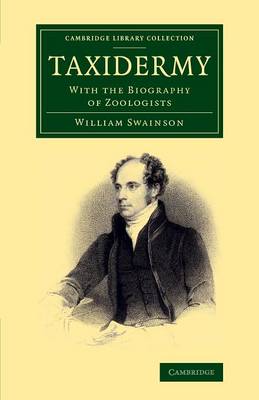Cambridge Library Collection - Zoology
2 total works
A Preliminary Discourse on the Study of Natural History
by William Swainson
Published 24 September 2009
William Swainson F. R. S., was recognised principally as a zoologist, an ornithologist and a skilled and prolific illustrator. He also had a tremendous enthusiasm for seeking and identifying new species. In this 1834 volume however, Swainson addressed the nature of, foundations for and successful pursuit of zoology. It argues firmly for the key importance of taxonomy. Swainson was an ardent advocate of MacLeay's now entirely outmoded 'quinary' system of classification – even then a distinctly minority view. This sought affinities, patterns and analogies among organisms, in order to discern God's order. More than a mere curiosity, such work was of pivotal concern to enterprising naturalists of the 1820s and 1830s – including the young Charles Darwin. It also reached Robert Chambers, whose 1844 Vestiges of the Natural History of Creation was an important landmark in the development of the theory of evolution.
First published in 1840 as a volume in the Cabinet Cyclopaedia - a series published between 1830 and 1844, intended for the self-educating middle class - this work was written by the naturalist and artist William Swainson (1789–1855). The first part is a treatise on taxidermy, showcasing methods of Victorian science that may appear gruesome to modern readers. It discusses the best ways to collect, preserve and present animals for scientific study. Swainson gives detailed advice, making allowances for naturalists working in different locations and searching for a range of species. The directions for skinning and mounting animals are not for the faint-hearted, but they offer a fascinating insight into the practices of the time. The work's second part is a zoological bibliography, with short biographies of notable authors. Zoological painters and engravers, such as Thomas Bewick (1753–1828), are also featured.

